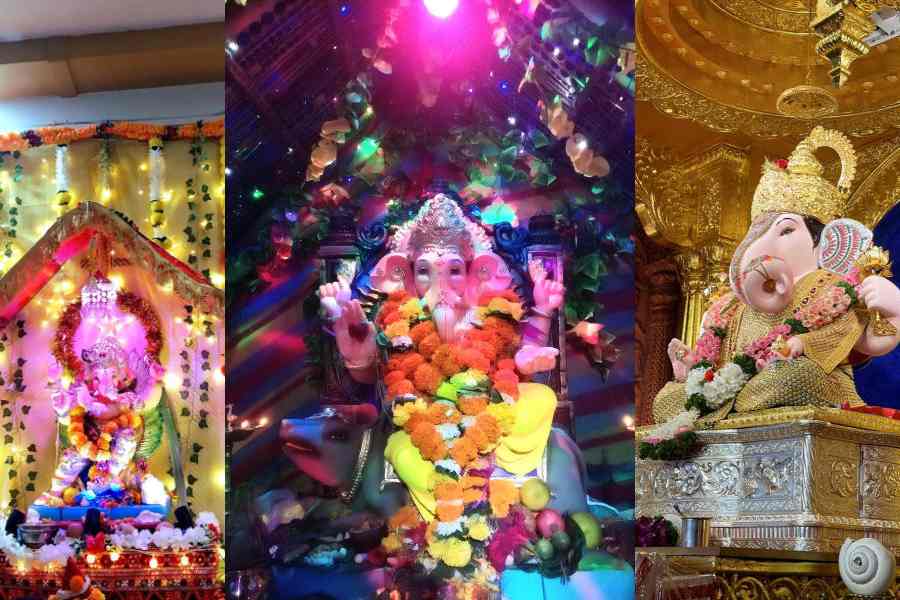The International Ganesh Festival 2023 is an initiative by the Directorate of Tourism Maharashtra with a mission to promote and celebrate the cultural and spiritual significance of Lord Ganesha on a global scale. On invitation from Maharashtra Tourism, t2 got an opportunity to attend the festival in Palghar and Pune and witness how Ganesh Chaturthi is celebrated there. Among other things, the International Ganesh Festival showcased the inclusivity and sustainability initiatives being adopted in the festivities.
Ganesh Chaturthi, celebrated across Maharashtra, is not just a religious festival, but a cultural one, much like our Durga Puja. Beautiful pandals and Ganesha idols uniting people in devotion and festivity for a span of 10 days give a carnivalesque feel to the whole state. On Anant Chaturdashi (the last day of the 10-day celebrations), which took place on September 28 this year, devotees bid a heartfelt farewell to Lord Ganesha with the visarjan (immersing ceremony) celebrations.
t2 soaked in the festival spirit of the festival.
PALGHAR:
In Palghar (a town in the Konkan division of Maharashtra), Ganesh Chaturthi harmonises community unity and spiritual reverence. Colourful processions and local traditions define the celebration. This district adds a unique touch to the festival with tribal dances and delectable delicacies, making it a heartwarming experience.
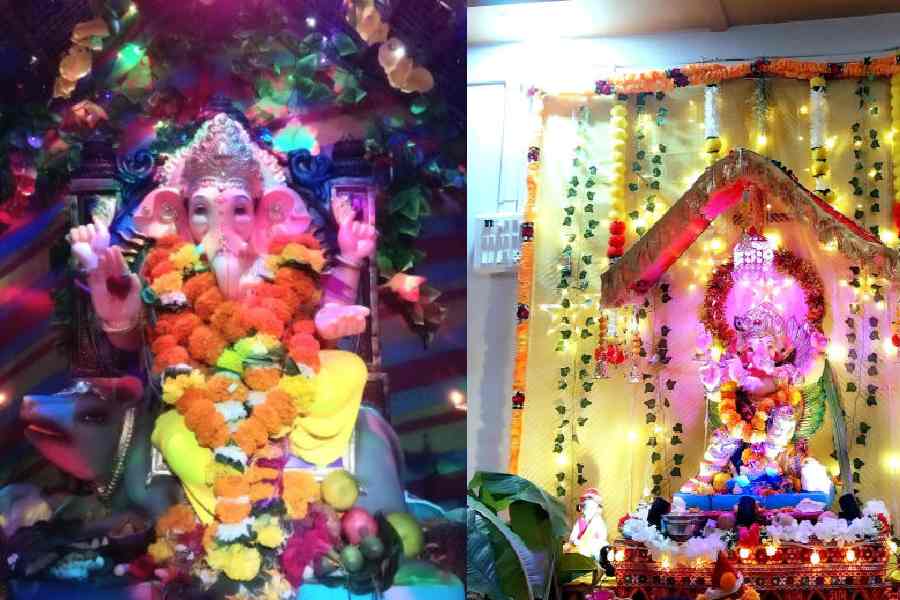
(l-r) This particular Ganesha idol was from a tribal village in Palghar called Vikram Garh, where the pandal was made from bamboo to promote the natural ecosystem.
The special thing about household celebrations of the festival is when the whole family comes together to adorn the idol and worship it. This capture is from a Marathi household where devotees worship smaller idols placed in their living rooms with festival lights and flower arrangements.
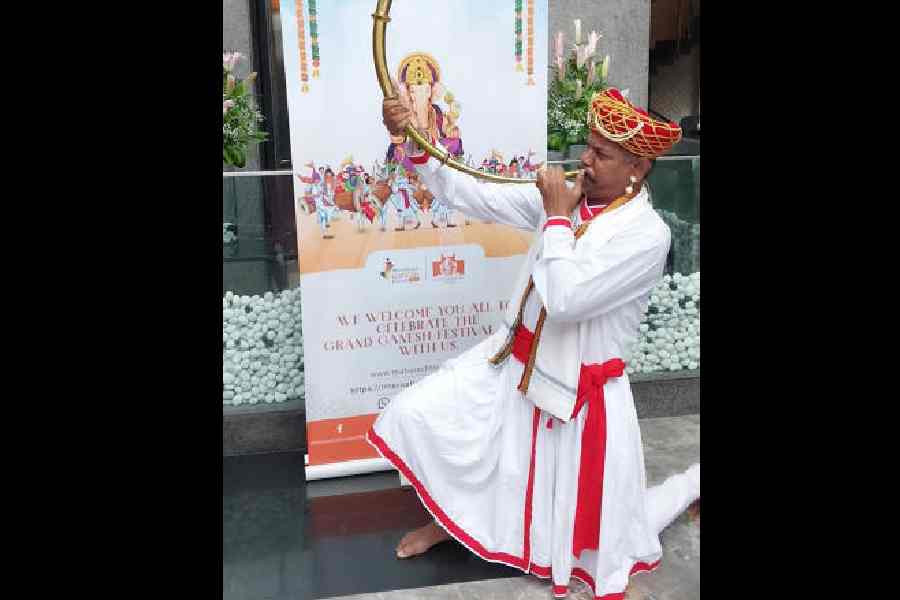
Tutari or sringa is kind of a traditional Marathi blowhorn which is played on different occasions like weddings or religious events. A tutari is usually played during the welcome of a Ganesha idol in a pandal.
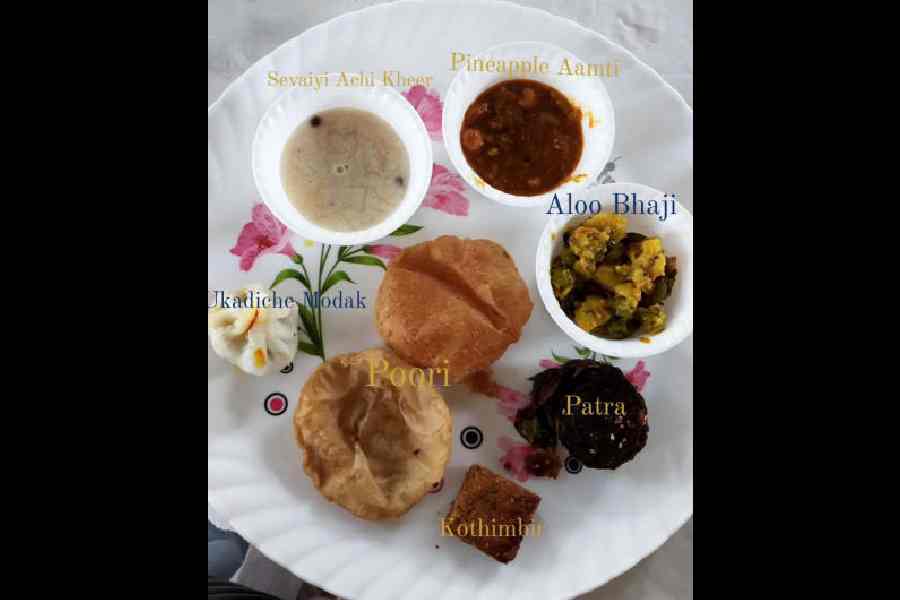
A staple Marathi festive thalicomprises some mouthwatering bites like poori, aloo bhaji, pineapple aamti (Maharashtrian nutty and tart side dish made with pineapples), patra (colocasia leaves covered with gram flour and deep-fried), kothimbir vadi (coriander fritters), seviyan achi kheer (vermicelli porridge) and the famous ukadiche modak (steamed coconut sweet dumpling) to finish off the meal.
PUNE:
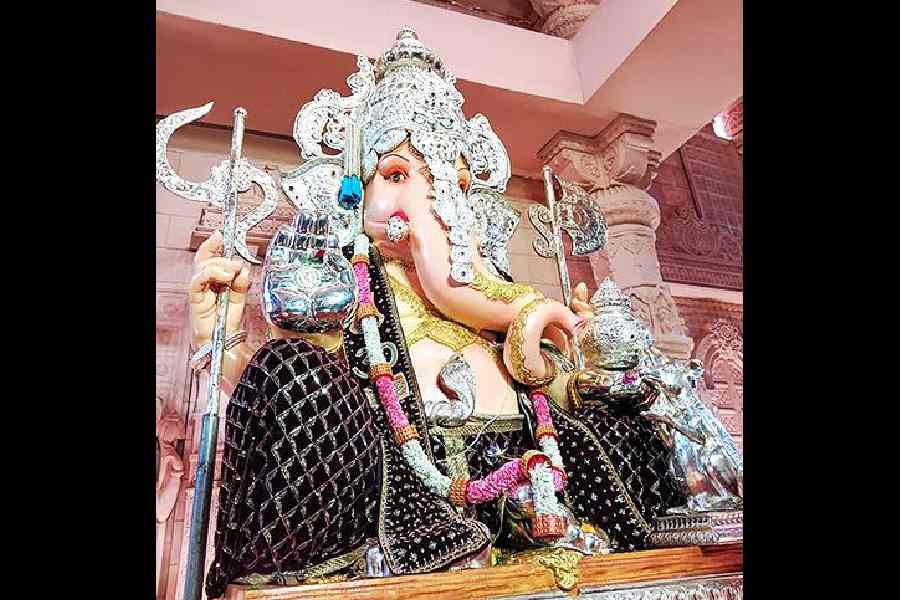
Tulsi Baug Ganapati on the bustling streets of Kasba Peth market, also known as the heart of the Pune city, famous for brass and copper utensils, jewellery and more.
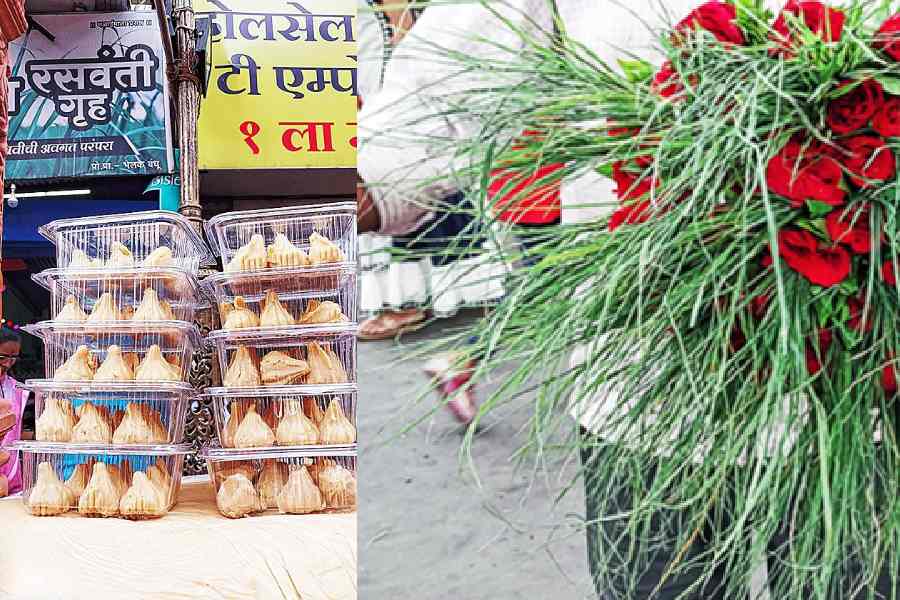
The vibrant and bustling streets of Kasba Peth were all decked up in festivity and modaks made of kheer, which is usually offered to Lord Ganesha, were sold in bulk for the devotees to take home. Bouquets made of rose and conch grass are known to be an auspicious offering to the elephant God.
